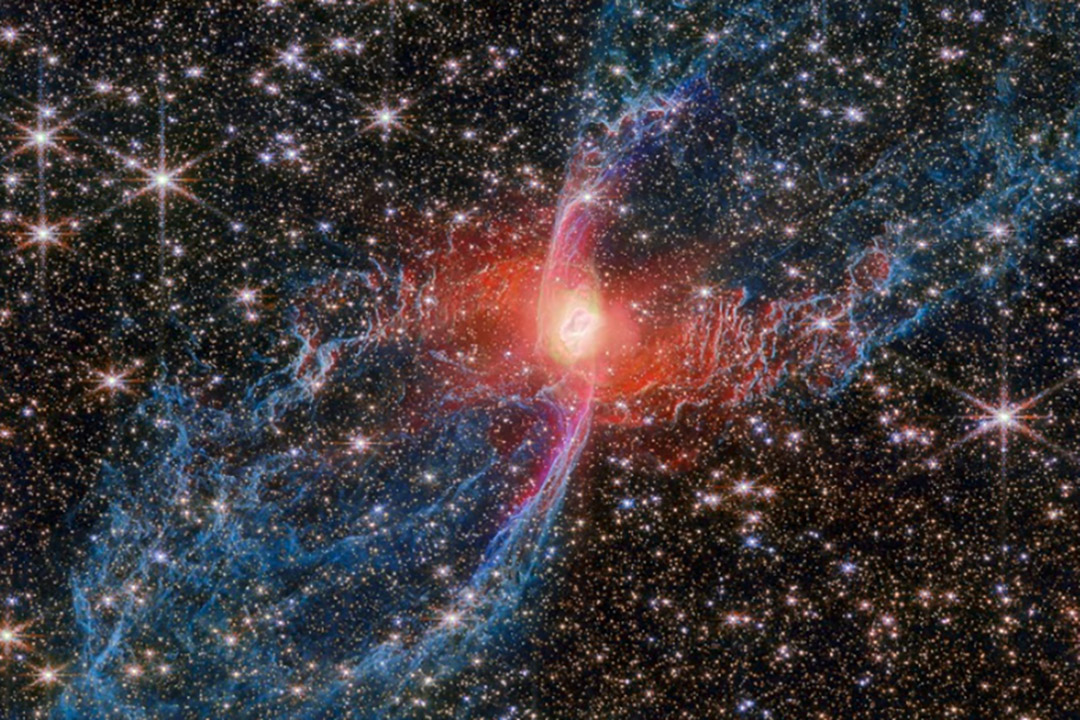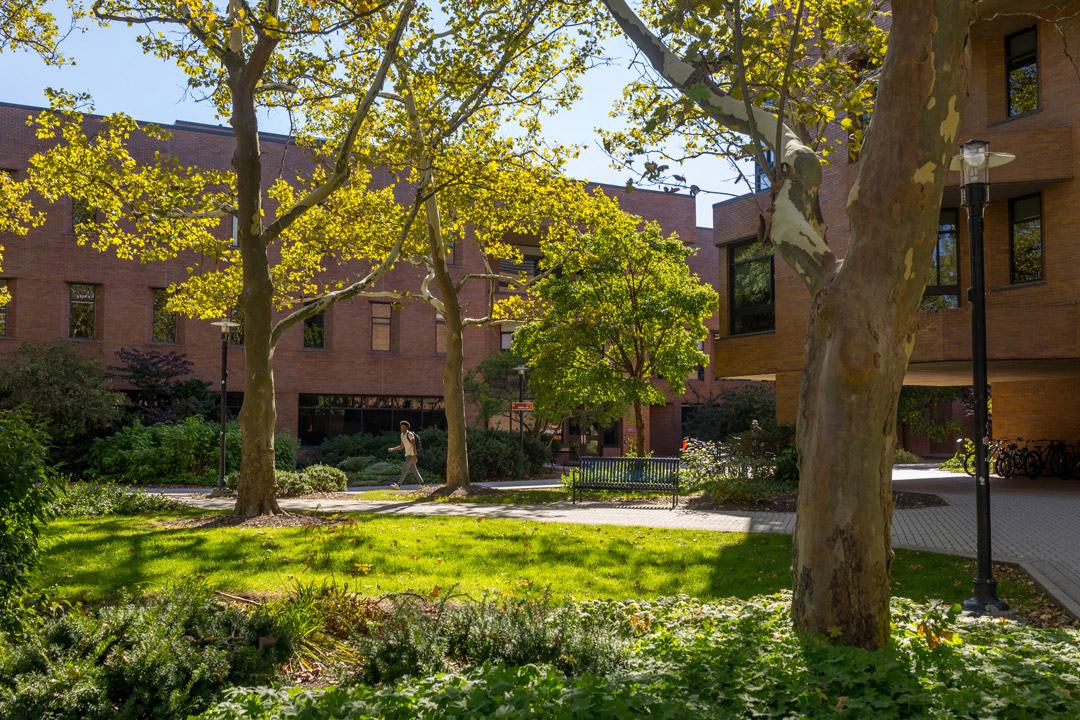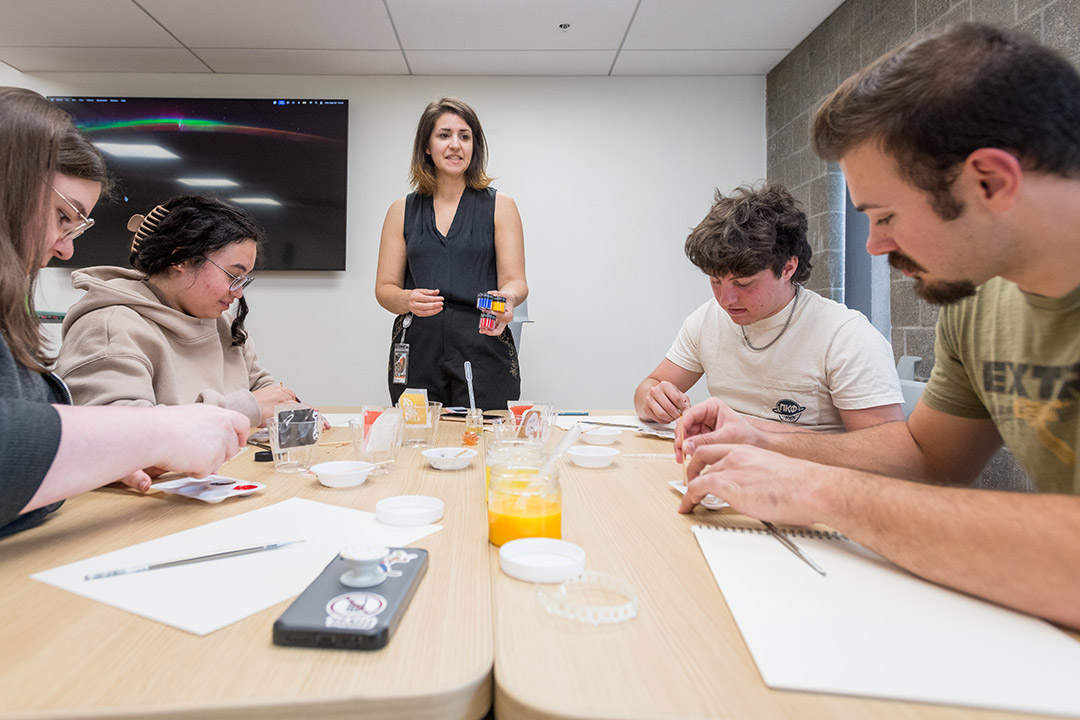New images of the cosmic object published in ‘The Astrophysical Journal’ and featured as ESA’s Webb picture of the month
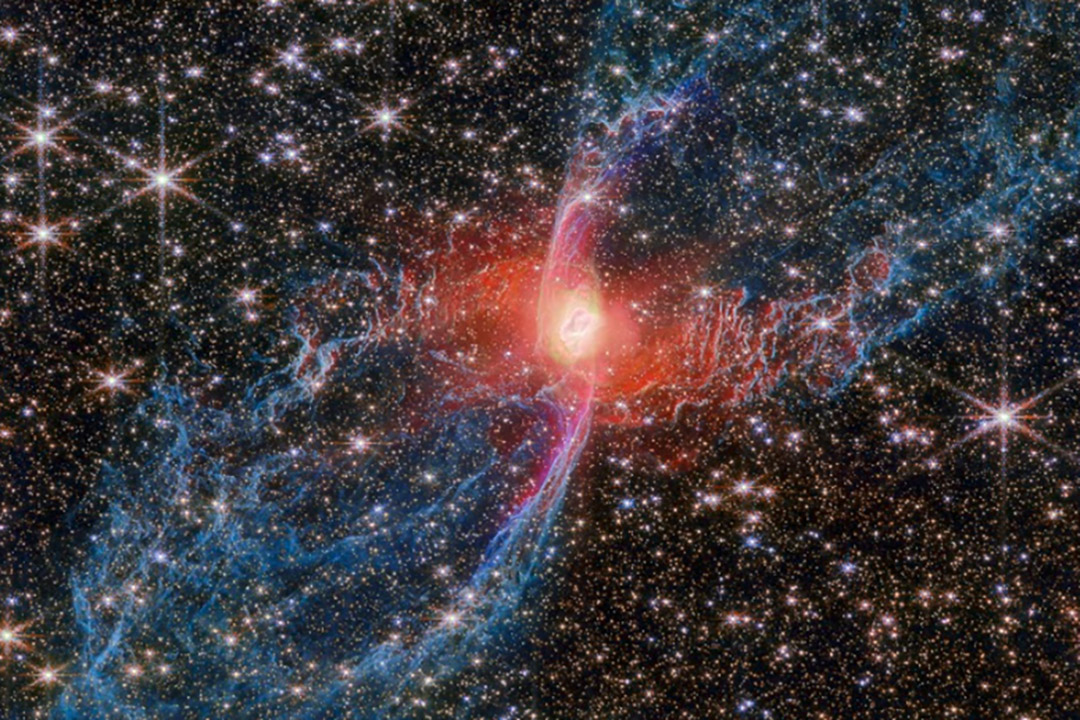
ESA/Webb, NASA, CSA, Kastner
The Red Spider Nebula is shown with more detail than ever against a backdrop of thousands of stars.
A creepy, crawly object in the middle of the Milky Way can now be seen clearer than ever thanks to work by RIT scientists.
The Red Spider Nebula, catalogued as NGC 6537 and named for its distinct shape, has been given a new makeover by James Webb Space Telescope near-infrared (NIRCam) imaging complemented by new Atacama Large Millimeter Array (ALMA) radio-wavelength and Chandra X-ray Observatory observations and archival Hubble Space Telescope images. The combination of observations with the three most powerful NASA telescopes and the world’s most powerful radio observatory provides a dramatic, new view of the nebula, yielding insight into its origins, structure, and composition.
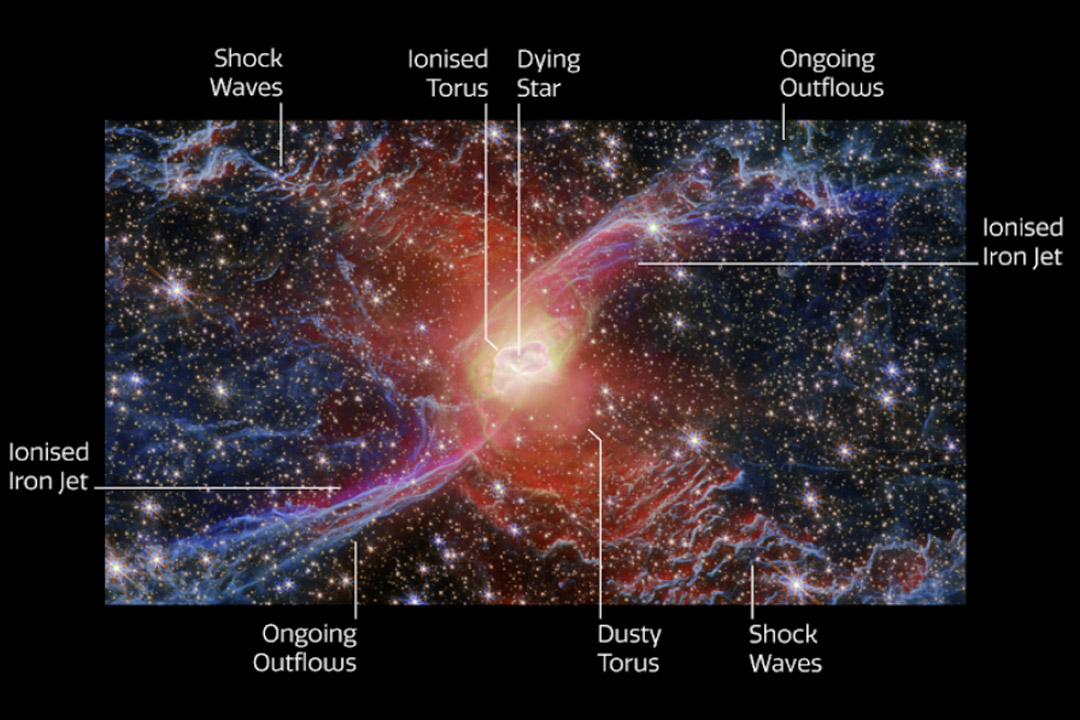
ESA/Webb, NASA, CSA, Kastner
An annotated image of the Red Spider Nebula shows details of the structure as never seen before.
The research is led by RIT Chester F. Carlson Center for Imaging Science Professor Joel Kastner and former postdoctoral researcher Paula Moraga Baez ‘21 MS, ‘24 Ph.D. (astrophysical sciences and technology), with the help from RIT alumnus Rodolfo Montez Jr. ‘11 Ph.D. (astrophysical sciences and technology). NTID Associate Professor Jason Nordhaus was a co-author.
The findings were released in The Astrophysical Journal, and the image was featured as the European Space Agency’s Halloween-themed picture of the month for October.
Other co-authors of the paper include Bruce Balick (University of Washington), Caroline Geiser (Max Planck Institute, Germany), Mikako Matsuura (Cardiff University, United Kingdom), and Miguel Santander-Garcia (Spanish National Observatory).



